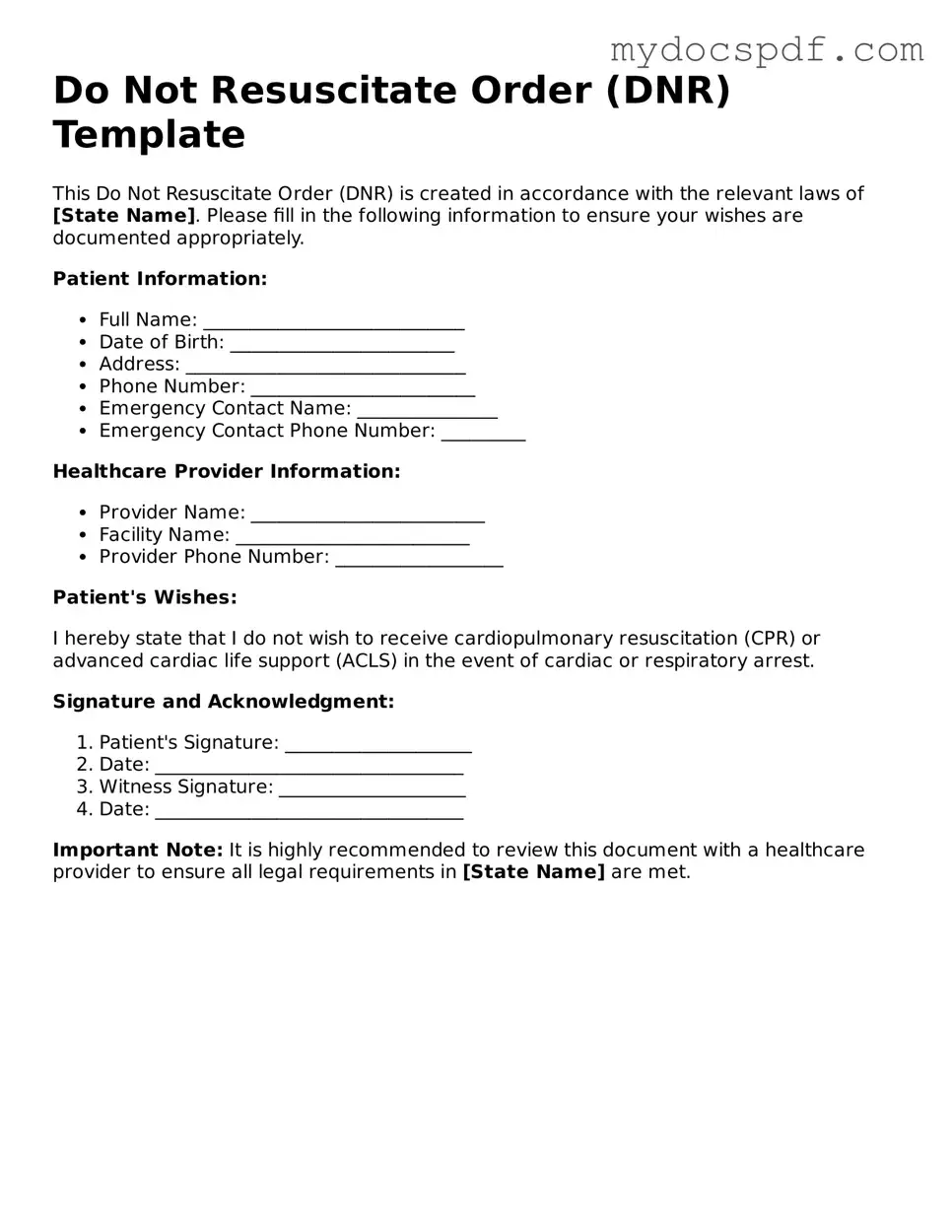Do Not Resuscitate Order (DNR) Template
This Do Not Resuscitate Order (DNR) is created in accordance with the relevant laws of [State Name]. Please fill in the following information to ensure your wishes are documented appropriately.
Patient Information:
- Full Name: ____________________________
- Date of Birth: ________________________
- Address: ______________________________
- Phone Number: ________________________
- Emergency Contact Name: _______________
- Emergency Contact Phone Number: _________
Healthcare Provider Information:
- Provider Name: _________________________
- Facility Name: _________________________
- Provider Phone Number: __________________
Patient's Wishes:
I hereby state that I do not wish to receive cardiopulmonary resuscitation (CPR) or advanced cardiac life support (ACLS) in the event of cardiac or respiratory arrest.
Signature and Acknowledgment:
- Patient's Signature: ____________________
- Date: _________________________________
- Witness Signature: ____________________
- Date: _________________________________
Important Note: It is highly recommended to review this document with a healthcare provider to ensure all legal requirements in [State Name] are met.
